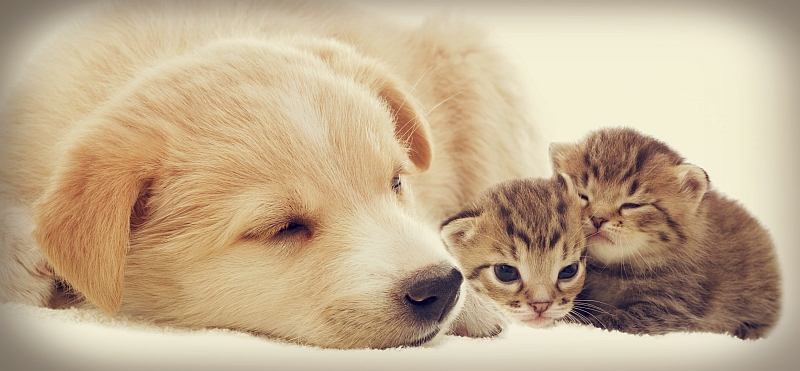After a cat or dog gives birth, their litter survives solely by relying on nourishment from their mother’s milk. Kittens and puppies nurse for several weeks as their bodies get stronger, immune systems develop and they begin to engage with their siblings, their environment, and their new senses of sight, hearing, etc. However, after a certain amount of time, a mother’s milk-only diet is no longer sufficient for the animals, and they need to be weaned. Most puppies and kittens begin the weaning process after a few weeks of nursing. Here are some notes on how to wean a litter and transition them to “regular food” for young animals.
Notes on Weaning Animals
The process of weaning typically begins when dog is about a month old, and reaches completion right around the 7 or 8 week of their lives. For cats, weaning also begins around 4 weeks old, but generally extends to the 8-10 week mark.
When the weaning begins, pet parents are advised to begin separating the young pets from their mother for a certain amount of time per day. This should be gradually increased in small increments, so that the kitties and puppies do not experience separation anxiety, but rather a healthy curiosity about the greater world. The young pets should be kept from their mother 1-2 hours at a time, and steadily increasing the time and the food portion they ingest.
In such times of separation, the kindle or puppy litter can start feeding on small portions of the food they will be provided when they have been fully weaned. Make sure the food is high quality, made with natural ingredients which are high in vitamins, minerals, protein, and fiber to help support their health as they grow. Try mixing the food with warm water at first, to soften the material as they eat it. This will help ease the transition from a liquid-to-solids diet.
Weaning must be done gradually for several reasons. First, removing a pet form it’s mother prematurely, or without the proper guidelines, can lead to emotional and behavioral issues in the pet later on. This may affect the creature socially and even physically, and should always be done in a slow and steady process. Doing so too early or too late could cause digestive issues, a lack in sufficient nutrients, and give the animal trouble adjusting to the dietary changes. Making the switch in a slow and steady process is the best approach.
Another reason to wean little by little, is to keep the mother from over-producing milk which will not often be drained. This can be painful, causing the mammary glands to swell and give the cat or dog discomfort. Maintain a consistent feeding schedule that begins with 1-2 hours of separation, then 3-4, then 5-6, then 7-8 hours at a time, until the mother stops producing milk entirely, and the pets can feed themselves from a normal pet food bowl.

